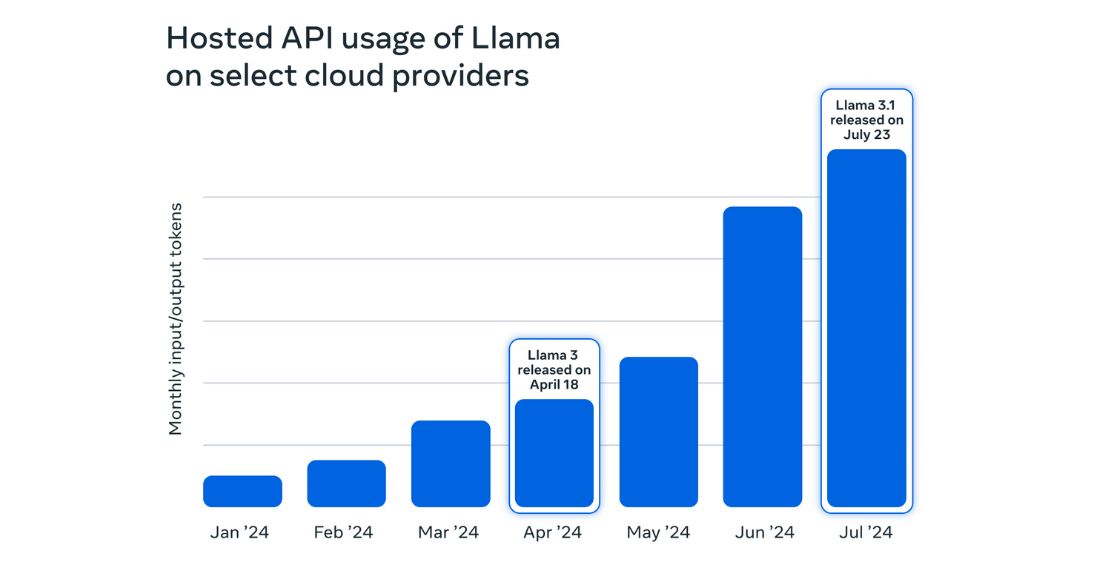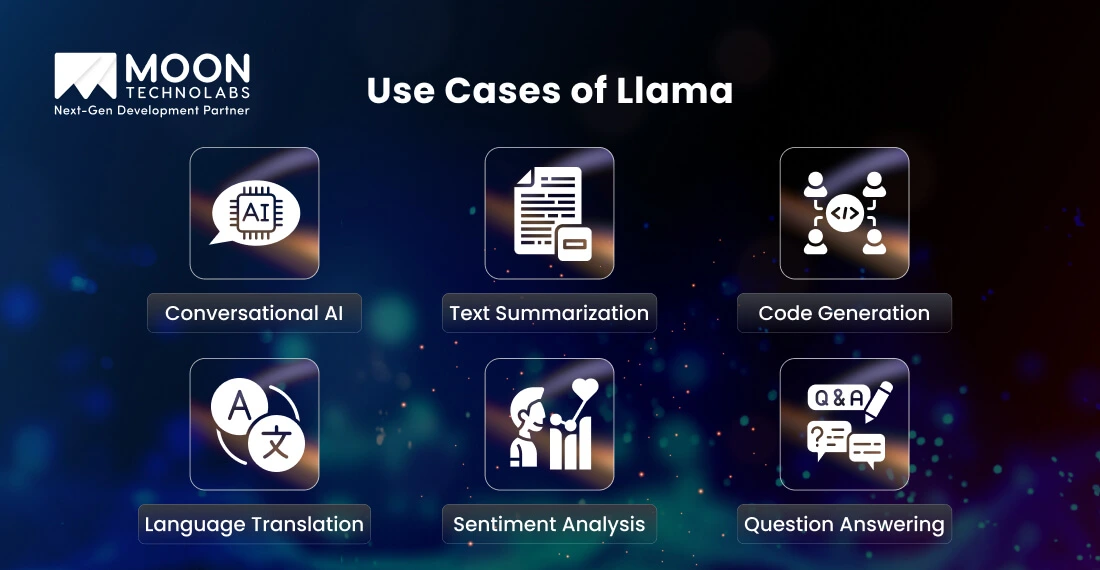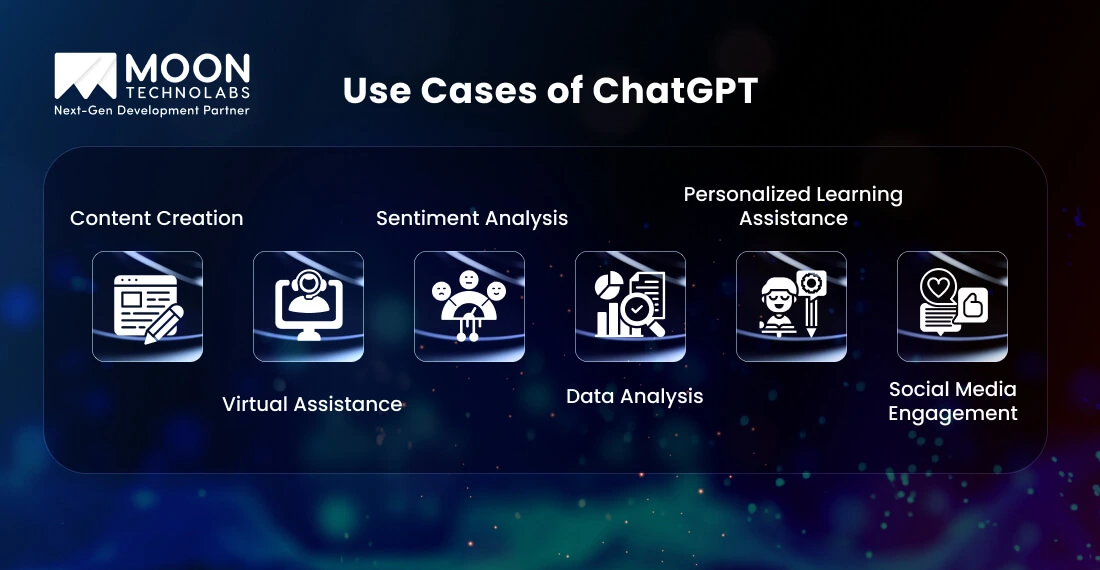Table of Content
Blog Summary:
This post allows you to explore a detailed comparison of Llama vs. GPT, with a thorough explanation of everything. We compare based on various factors and also discuss basic information, use cases, pros, and cons. Going through the entire discussion helps you select the right language for your project.
Table of Content
In today’s AI-dominated world, Llama (Large Language Model Meta AI) and GPT (Generative Pre-Trained Transformer) have emerged as powerful language models. Both are available with outstanding capabilities to grasp natural language and generate results. The latest stats reveal that Llama has claimed approximately 350 million downloads so far. On the other hand, ChatGPT claims 400 million weekly active users globally.

Meanwhile, they are different from each other in terms of training methods, architecture, accessibility, and real-world applications. So, businesses looking for the best option between these two often seek a detailed comparison of Llama vs GPT to choose the best option for them.
In this post, we have discussed both languages, along with other necessary information to help you make the right decision.
AI language models are quite essential in today’s applications, mainly due to their ability to understand and produce human-like text. They power virtual assistants, chatbots, content creation tools, and more.
These improve both efficiency and communication across multiple industries. AI language models have gained wide acceptance in many industries, including education, healthcare, and customer service.
Llama is a combination of various language models developed by Facebook, a social media giant. These models are appropriate for both research and commercial use.
They are trained properly for vast datasets and can understand and produce human-like text. It makes them an impeccable tool for AI apps, such as content generation, chatbots, and code assistance, among others.

Llama has become highly popular across a range of domains due to having several use cases. We have explained some of them.
Llama models are perfect for powering conversational AI systems, including virtual assistants and chatbots. These models engage users to understand the content, engage in human-like conversations, handle multi-threaded dialogue, respond appropriately, etc.
Llama has the capability of processing even long documents with higher efficiency. It produces meaningful and concise summaries. Be it research papers, summarizing news articles, or matching transcripts, Llama models identify core ideas and present them in a more readable format.
Code generation is another popular use case of Llama. It enables developers to generate code snippets, translate natural language instructions into programming code, or debug. It also supports a range of programming languages and integrates seamlessly into IDEs for error detection, explanations, auto-completion, and more.
Language translation is important, and Llama can perform multilingual translations. It offers real-time cross-border communication. Whether it’s translating web content, customer feedback, or emails, Llama does everything with perfection. It’s also helpful in breaking language barriers.
Researchers and businesses are leveraging Llama for performing sentiment analysis. It helps determine the emotional tone behind texts, including product reviews, social media posts, or customer feedback. This model classifies sentiments easily and offers an in-depth insight into brand perception and public opinion.
Llama uses vast datasets to answer and thus respond to users’ queries efficiently. You can use it to access enterprise knowledge bases, academic research assistants, or even create intelligent search engines.
GPT is an important form of AI model introduced by OpenAI. It leverages a deep learning architecture to generate human-like text based on the input it receives. GPT can perform many tasks, such as writing essays, answering questions, and translating languages.
Get our tailored AI solutions to match your unique business requirements to boost scalability, efficiency, and innovation with custom-developed intelligence.

ChatGPT is available with unmatched potential to accomplish a variety of tasks in multiple industries. Some of the popular use cases of ChatGPT are as follows;
Content creation is one of the major use cases of ChatGPT. It helps produce top-quality content, whether it’s articles, scripts, social media posts, or others. ChatGPT is helpful to create outlines, brainstorm ideas, and quickly produce drafts, which streamlines the writing process.
ChatGPT can manage several tasks, such as answering emails, scheduling, and setting reminders, among others. It can understand natural language and converse with users in real-time. It’s useful in assisting customer service and handling various routine inquiries.
ChatGPT is perfect for individuals and businesses. It analyzes reviews, customer feedback, social media posts, etc. It categorizes content as negative, positive, and neutral. Thus, ChatGPT enables organizations to understand public perception, find potential issues, and ensure the success of products or services.
ChatGPT processes and interprets even complex data properly. It helps recognize patterns in data, summarize findings, and produce important insights. This makes it useful for both data scientists and analysts to do an effective comparison while explaining technical results, preparing reports, etc.
ChatGPT is highly important when it comes to personalized learning. It serves as a tutor, helping students with various subjects by answering questions, offering explanations, and more.
Besides, it also provides additional resources for an in-depth understanding. ChatGPT adapts based on the learning styles of an individual and thus emerges as an effective tool for remote learning.
ChatGPT automates social media engagement by creating posts, generating personalized responses, and managing interactions, among other tasks. It has the capability of helping businesses maintain an active online presence by generating hashtags, responding to customer inquiries, creating promotional content, and more.
Though both Llama and GPT leverage natural language processing, they are indeed different from each other in various aspects. We have discussed some of the major differences between these two as follows.
When it comes to architecture and model size, both Llama and GPT differ. The latest version of GPT is a transfer-based model that implements deep architecture with billions of parameters. These allow GPT to generate coherent text.
On the other hand, Llama includes parameters ranging from 7 billion to 65 billion. It’s highly efficient and can maintain high performance with just a couple of computational resources. That’s why Llama is perfect for situations that require fast deployment and limited computation power.
When it comes to training data, it also differs for both Llama and GPT in their composition and scope. GPT models are trained on diverse and vast datasets that span internet sources, such as books and websites.
Llama uses various approaches in their training. Meanwhile, it also uses a vast amount of text data. The core focus of its data curation is quality. To make it versatile and transparent, Meta focuses on using a variety of research-based and open-source texts.
You Might Also Like:
Google Bard Vs ChatGPT: Comprehensive Analysis of Top AI Platforms
GPT emerges as a top performer in NLP tasks due to its diverse training data and proper size. It performs various tasks, such as code generation, creative writing, translation, conversation, and summarization. It has an in-depth understanding of syntax, content, semantics, etc.
Llama has immense capability in various NLP tasks. Its performance is particularly notable in tasks that require higher efficiency and fast responses. It provides robust performance across more resource-efficient apps.
Efficiency is one of the major benefits of Llama, which is based on optimized training techniques and small parameter sizes. It requires a couple of computational resources to run properly. It makes Llama more accessible for individuals or small organizations that work with limited hardware.
Larger GPT models, including GPT-4 demand vast computational resources. Running these models typically requires robust hardware, such as TPUs or GPUs, and can be costly.
GPT comes with vast customization capabilities. OpenAI offers users the ability to fine-tune the model for various specialized tasks. It includes the flexibility to adapt to different domains, making it the right choice for businesses seeking a versatile solution.
Llama offers the greatest advantage when it comes to customization. Developers find the option to access and modify the code of the model to match their needs. It ensures fine-tuning according to specific applications. Meanwhile, it lacks third-party fine-tuning support compared to GPT.
As for use cases, they both have a wide range of applications. GPT has a diverse training and a vast model size that enables it to excel in various complex NLP applications. These include virtual assistance, content creation, data analysis, and customer service, among others.
Llama emphasizes lightweight and efficient applications and is perfect for use cases where resources are limited. It’s a good choice for edge computing, small-scale deployments, and applications that require real-time processing.
GPT is indeed expensive and mainly used on large-scale applications. OpenAI provides GPT models through a paid API, which can be expensive for businesses seeking high-volume and frequent access.
Llama provides a highly accessible option. You can download and use it for free. It offers users important computational infrastructure to run it properly. It’s indeed a perfect option for developers or businesses with a tight budget.
Whether it’s Llama or GPT, we help you integrate powerful AI into your workflows. Let’s build intelligent, scalable solutions together.
Any technology comes with both advantages and setbacks. Llama is certainly not an exception. Let’s check various pros and cons of this technology.
This is one of the major advantages of the Llama technology. It’s highly efficient and compact compared to its larger counterparts. It runs on a range of hardware configurations. This makes Llama perfect for various situations where smaller, nimble models are required, including edge computing or on-device AI apps.
Llama models need a couple of resources for both training and inference. It facilitates lower operational costs and thus makes it highly accessible to many small organizations or those without access to extensive computation infrastructure.
Meta has made the model fully accessible to many developers and the research community. This kind of openness emphasizes innovation, as it enables anyone to fine-tune the model for a specific task. It contributes majorly to improvement, or also adapts it for using its unique apps.
Though Llama is most effective and efficient for many applications, it has certain limitations for tackling large-scale and complex NLP tasks. The small model size, compared to many other large-scale models, including GPT, limits its capability to handle deep semantic understanding, intricate language generation, nuanced conversations, and more.
Another major setback is the relatively small dataset used for training Llama when compared to GPT. Whether it’s the diversity or size of the training data, it’s indeed important in developing a high-performance and powerful language model. Though Llama’s training data is sufficient for various applications, it falls short, especially when compared to its counterpart’s massive corpus.
GPT is indeed a popular choice in the world of AI language models. Meanwhile, it also comes with many advantages and disadvantages. Let’s explore some of them.
GPT models are trained mainly for a vast amount of text data, which enables them to grasp nuances, context, and subtle meanings even within language. This top-quality understanding allows GPT to produce human-like responses, making it perfect for applications that require sophisticated text comprehension, such as translation and content creation.
GPT has gained vast acceptance across many industries. Its API is integrated into multiple products, ranging from virtual assistants, such as ChatGPT, to customer service bots. Its adaptability has indeed made it the most popular tool for businesses and developers worldwide.
For tackling NLP tasks, GPT has an edge over its counterpart. Whether performing sentiment analysis, producing coherent essays, or resolving important queries, GPT can deliver outstanding results. It is robust when that task needs not only pattern recognition but also creativity.
The major setback of GPT is that it requires high computational resources. The models are indeed large and include a number of parameters that require significant processing power for training and deployment. Running these models with a higher efficiency often requires robust and specialized hardware accelerators. It’s indeed highly expensive to maintain.
Since GPT models are resource-intensive, their actual costs for usage, especially for large scales, can be prohibitive. Besides, running GPT-4 on a cloud platform for those tasks that need a higher volume of data incurs higher costs. It makes GPT less appropriate for many organizations or startups with budget limitations.
When deciding between GPT and Llama, consider several specific requirements related to your project. You can opt for Llama for efficiency models and lightweight tasks that don’t need vast computational resources.
It’s perfect for various applications, such as text summarization, conversational AI, and smaller-scale NLP tasks. Besides, GPT is perfect for resource-intensive and complex applications. These include virtual assistance, advanced content creation, and intricate data analysis, among others.
The future of AI language models appears brighter with advancements in adaptability, efficiency, and ethical alignment, among others. With the robustness of models, one can expect enhanced domain-specific expertise, multilingual capabilities, contextual understanding, and more.
Many open-source models, including Llama, are expected to boost accessibility and innovation. On the other hand, GPT is likely to improve its performance. In the future, the focus on AI will shift more to minimizing biases, ensuring safe interactions, improving transparency, and more.
Whether it’s GPT or Llama, they include robust capabilities in the area of AI language modeling – of course, they come with many unique advantages. So, choosing the right option between these two depends on various specific goals and needs.
Moon Technolabs is a leading generative AI consulting company. We have earned unmatched expertise in leveraging the power of both models to deliver next-generation AI solutions to your business. Connect with our experts to get a clear idea of which technology is best for your business.
01
02
03
04
05
Submitting the form below will ensure a prompt response from us.